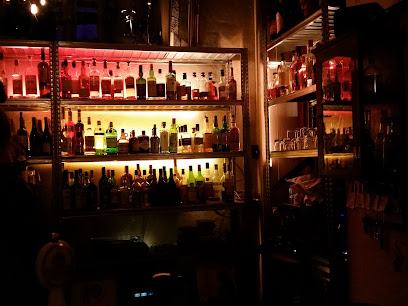
A Field of Remembrance: Memorial to the Murdered Jews of Europe
A poignant memorial in the heart of Berlin, the Holocaust Memorial offers a space for contemplation and remembrance of the Jewish victims of the Holocaust, inviting personal reflection.
The Memorial to the Murdered Jews of Europe, also known as the Holocaust Memorial, is a powerful and thought-provoking site in the heart of Berlin. Designed by architect Peter Eisenman, the memorial consists of 2,711 concrete slabs (stelae) arranged in a grid-like pattern across a 19,000-square-meter undulating field. The varying heights and the sloping ground create a sense of unease and disorientation, prompting reflection on the enormity and incomprehensibility of the Holocaust. Open 24/7, the memorial invites visitors to wander through its abstract landscape, engaging with the space in their own personal way. An underground Information Center provides further context, documenting the persecution and extermination of European Jews through historical accounts, personal stories, and artifacts. The memorial serves as a central place of remembrance and warning, encouraging contemplation on one of the darkest chapters in human history. Situated near the Brandenburg Gate, it stands as a constant reminder of the past and a call for vigilance against intolerance and hatred.
A brief summary to Memorial to the Murdered Jews of Europe
- Cora-Berliner-Straße 1, Berlin, Mitte, 10117, DE
- +49302639430
- Visit website
Local tips
- Visit both the Field of Stelae and the underground Information Center for a comprehensive understanding of the memorial's purpose and the history of the Holocaust.
- Allow ample time to wander through the Field of Stelae and reflect on the experience. The atmosphere can be powerful and emotionally affecting.
- Be respectful of the site and its significance. Avoid climbing on the stelae or engaging in disruptive behavior.
- Consider visiting at different times of day to experience the memorial's changing atmosphere with the light.
- Check the Information Center's opening hours in advance, as it is closed on Mondays and has limited hours on certain holidays.
Getting There
-
Public Transport
The Memorial to the Murdered Jews of Europe is easily accessible by public transport. The closest U-Bahn and S-Bahn station is Brandenburger Tor, served by the U55 line and S1, S2, and S25 lines respectively. From the station, it's a short walk south towards the memorial. Alternatively, you can take bus lines 100 or 200 to the Brandenburger Tor stop, which is also a short walk from the memorial. A single fare for public transport within Berlin (AB zone) is approximately €3.20.
-
Walking
The memorial is centrally located and within walking distance of many other major Berlin landmarks. From the Brandenburg Gate, it's less than a 5-minute walk south. From Potsdamer Platz, it's about a 5-10 minute walk north. Walking allows you to appreciate the surrounding area and easily combine your visit with other attractions. There are no costs associated with walking.
-
Taxi/Ride-Share
Taxis and ride-sharing services are readily available in Berlin. A short taxi or ride-share trip from a nearby location like Potsdamer Platz or the Brandenburg Gate to the memorial would likely cost between €8 and €15, depending on traffic and the specific service used.
-
Driving
While driving is an option, parking in the immediate vicinity of the memorial is limited and can be expensive. Consider using a nearby parking garage, such as the underground parking garage at Potsdamer Platz, which is a short walk away. Parking fees in this area typically range from €3-€4 per hour, with daily maximums around €12-€15. Due to the central location and potential for traffic congestion, public transport or other means of transport are generally recommended.
Discover more about Memorial to the Murdered Jews of Europe
Iconic landmarks you can’t miss
Goethe Monument
0.2 km
Discover the Goethe Monument in Berlin, a stunning tribute to Germany's literary genius amidst the city's vibrant cultural landscape.
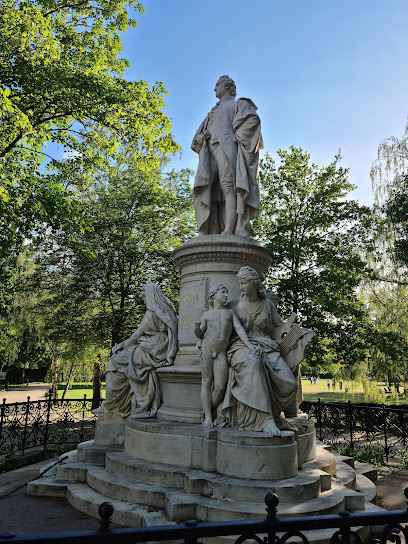
British Embassy Berlin
0.2 km
Explore the British Embassy in Berlin - a blend of modern architecture and rich diplomatic history in the heart of Germany.

Tourist Information at Brandenburg Gate
0.2 km
Your gateway to Berlin's history and culture, located at the iconic Brandenburg Gate, offering expert travel advice, tickets, and souvenirs for an unforgettable experience.
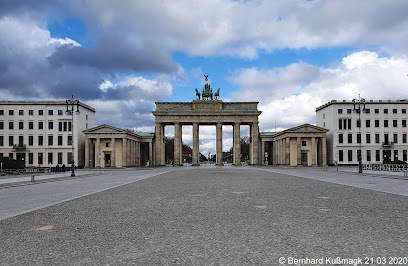
Embassy of Russia in Berlin
0.4 km
Explore the Embassy of Russia in Berlin, a stunning architectural landmark on Unter den Linden, reflecting rich history and cultural diplomacy.

Leipziger Pl.
0.5 km
Experience the blend of modernity and history at Leipziger Platz, Berlin's vibrant urban hub filled with shops, dining, and cultural events.
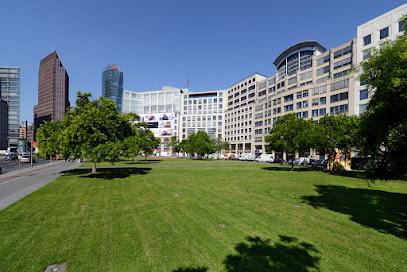
Jakob-Kaiser-Haus
0.5 km
Discover Jakob-Kaiser-Haus, a modern architectural gem in Berlin, symbolizing democracy and political heritage in the heart of Germany.

Verwaltung des Deutschen Bundestages
0.5 km
Discover the rich history and stunning architecture of the German Bundestag, a pivotal symbol of democracy in Berlin's vibrant Mitte district.

Platz d. Republik
0.6 km
Discover the political heart of Berlin at Platz d. Republik, home to the iconic Reichstag and a vibrant square filled with history and culture.
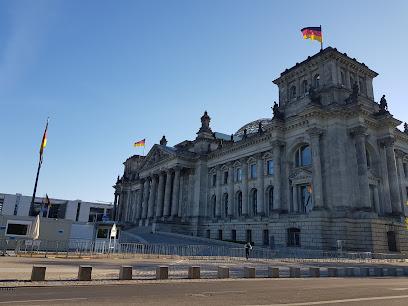
Marschall Bridge
0.6 km
Discover Berlin's Marschall Bridge: A breathtaking architectural gem connecting history and modernity across the Spree River.
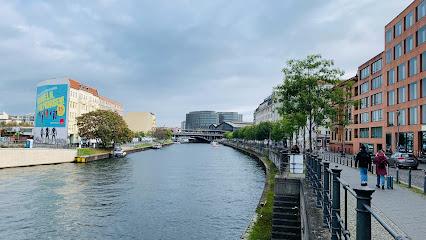
DDR Watch Tower
0.6 km
Explore the DDR Watch Tower in Berlin, a significant historical landmark that embodies the city's Cold War legacy and the struggles of division.
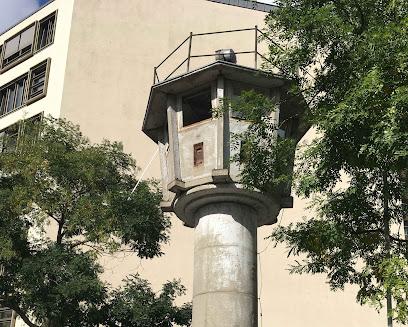
Potsdamer Str. 4
0.6 km
Discover the architectural beauty of Potsdamer Str. 4 in Berlin's Mitte district, a blend of history and modern design perfect for every traveler.
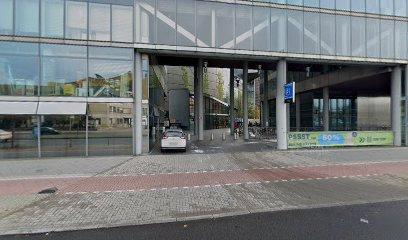
Detlev-Rohwedder-Haus
0.7 km
Explore the Detlev-Rohwedder-Haus in Berlin: A historical landmark that embodies Germany's complex past, from Nazi headquarters to the heart of reunification, offering guided tours and insights.
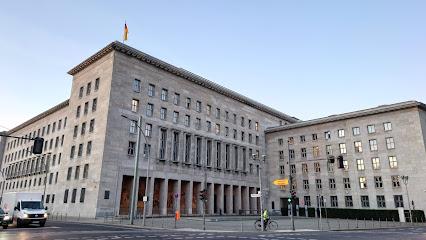
Abgeordnetenhaus Berlin
0.7 km
Explore the architectural marvel of Abgeordnetenhaus Berlin, where history, politics, and culture intertwine in the heart of the city.
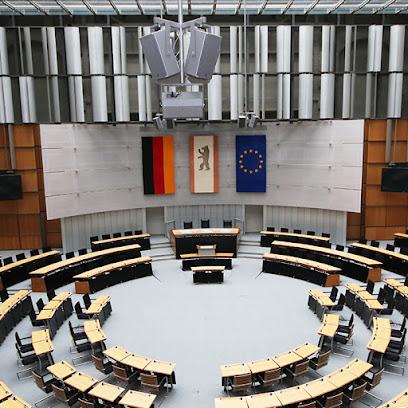
Gedenk- und Informationsort für die Opfer der nationalsozialistischen »Euthanasie«-Morde
0.7 km
Explore the profound Gedenk- und Informationsort für die Opfer der nationalsozialistischen 'Euthanasie'-Morde and reflect on a pivotal chapter of human history.
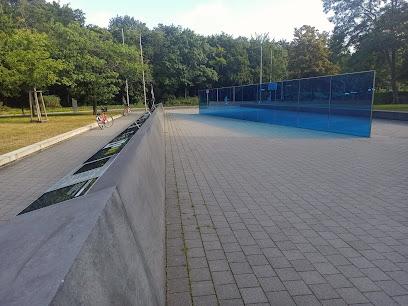
Konrad-Adenauer-Straße 1
0.7 km
Discover the stunning architecture and historical context of Konrad-Adenauer-Straße 1, a modern gem in the heart of Berlin's Mitte district.

Unmissable attractions to see
Memorial to Homosexuals Persecuted Under Nazism
0.2 km
Explore Berlin's Memorial to Homosexuals Persecuted Under Nazism, a poignant tribute to resilience and a powerful reminder of the LGBTQ+ struggle for rights.
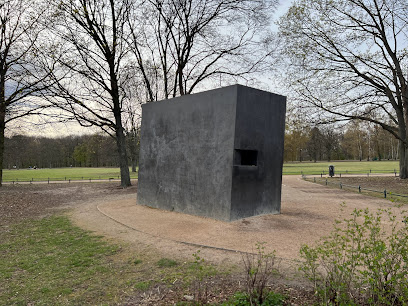
Ampelmännchen Statue
0.2 km
Explore the iconic Ampelmännchen Statue, a beloved symbol of Berlin's rich history and cultural heritage in the heart of the city.
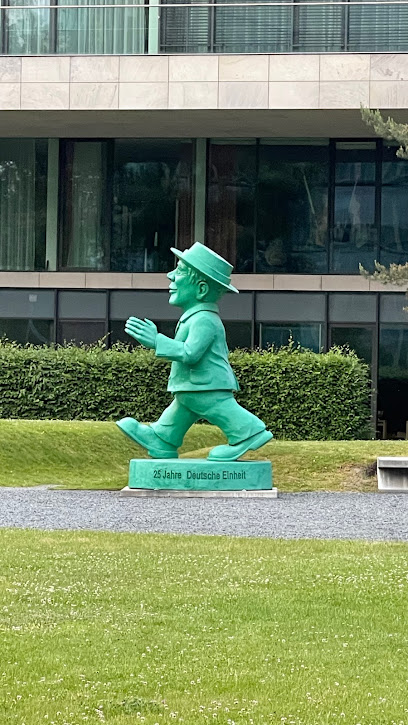
Academy of Arts
0.2 km
Explore the Academy of Arts in Berlin, a vibrant venue for contemporary art exhibitions and cultural events at the iconic Pariser Platz.
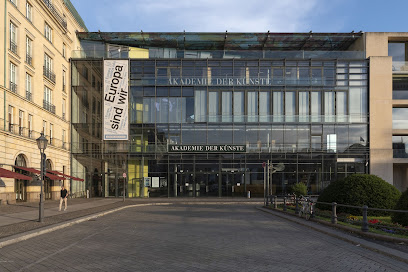
Historical location of the "Führerbunker"
0.2 km
Discover the poignant history of the Führerbunker in Berlin, a crucial site of World War II that shares stories of conflict and resilience.

Brandenburg Gate
0.3 km
Discover the historic Brandenburg Gate, a stunning neoclassical arch symbolizing Berlin's unity and resilience, located at Pariser Platz.

Pariser Platz
0.3 km
Explore the historical significance and architectural beauty of Pariser Platz, the iconic square at the heart of Berlin's vibrant culture.
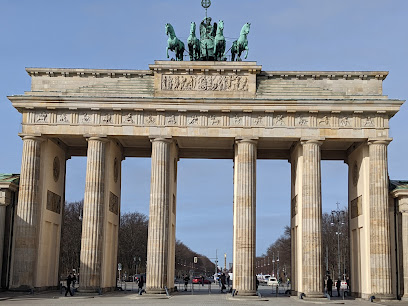
Platz des 18. März
0.3 km
Explore the vibrant history and culture at Platz des 18. März, a must-visit square in the heart of Berlin, surrounded by iconic landmarks and local charm.

Raum Der Stille
0.3 km
Discover tranquility at Raum Der Stille, a peaceful retreat in Berlin's iconic Pariser Platz, perfect for reflection and rejuvenation during your travels.
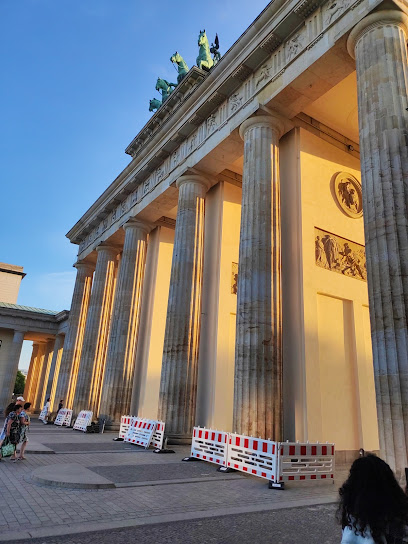
Stiftung Brandenburger Tor
0.3 km
Explore the rich artistic heritage of Berlin at Stiftung Brandenburger Tor, where history meets contemporary expression in a unique museum experience.
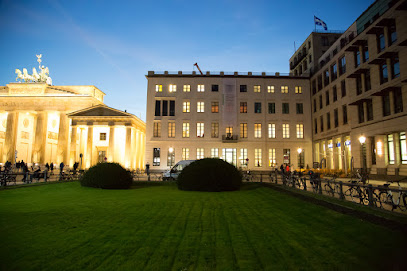
Ronald Reagan Gedenktafel
0.3 km
Explore the Ronald Reagan Gedenktafel in Berlin: a historical landmark commemorating leadership and unity during the Cold War era amidst vibrant city life.
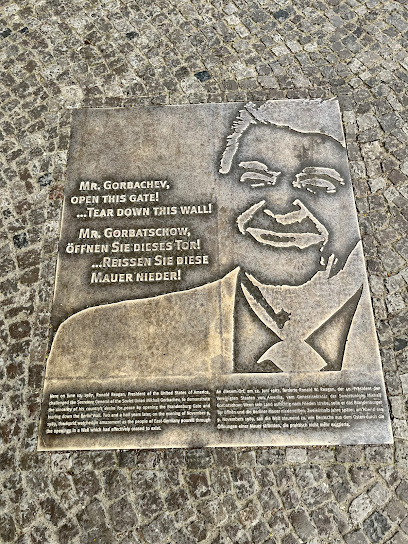
Max-Liebermann-Haus
0.3 km
Discover the artistic legacy of Max Liebermann at the Max-Liebermann-Haus, a serene cultural center in the heart of Berlin, near the Brandenburg Gate.
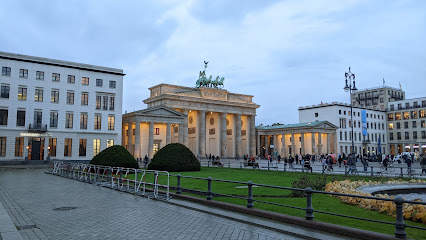
Johann Georg Elser Memorial
0.3 km
Discover the Johann Georg Elser Memorial in Berlin, a poignant tribute to individual bravery against tyranny, inspiring reflection on history and courage.
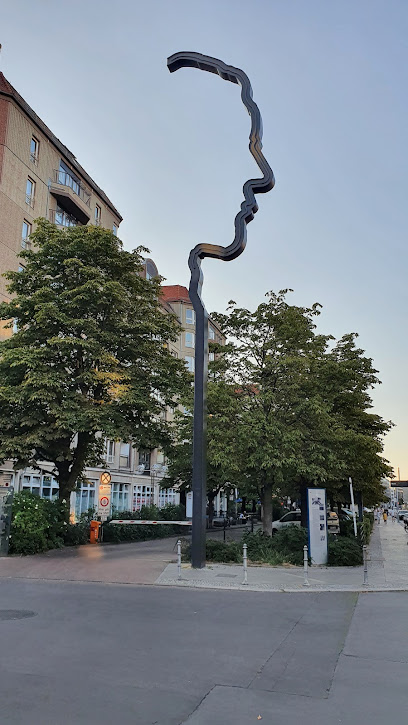
Pilecki-Institut
0.3 km
Explore the Pilecki Institute in Berlin, a museum dedicated to the legacy of Witold Pilecki and the stories of resistance during WWII.
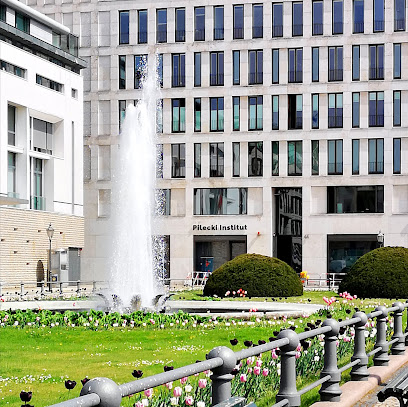
Brandenburg Gate Museum
0.3 km
Discover the rich history and cultural significance of Berlin at the Brandenburg Gate Museum, a must-visit tourist attraction near the iconic Brandenburg Gate.
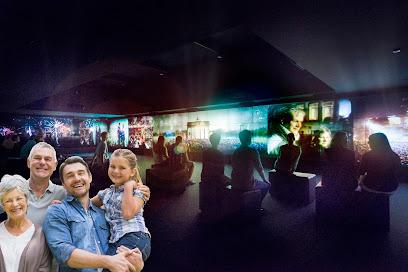
Global Stone Project
0.4 km
Explore the Global Stone Project in Berlin, where stunning sculptures meet the beauty of nature in a serene outdoor setting.
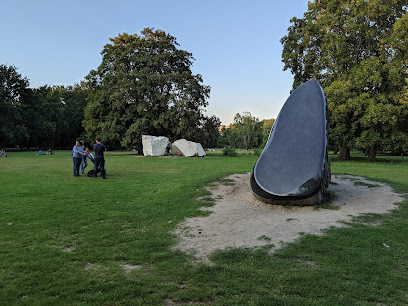
Essential places to dine
Lorenz Adlon Esszimmer
0.2 km
Experience unparalleled fine dining at Lorenz Adlon Esszimmer in Berlin – where modern European cuisine meets historic elegance.
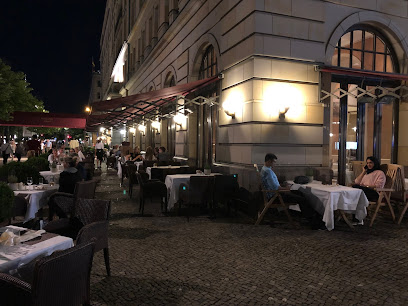
Restaurant Facil
0.6 km
Experience culinary artistry at Restaurant Facil in Berlin – where exquisite flavors meet modern elegance in fine dining.
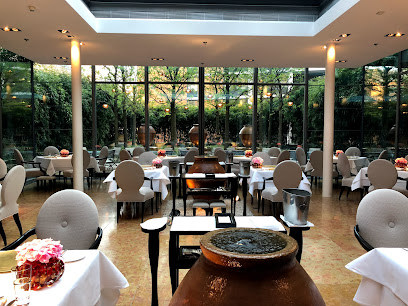
Bocca di Bacco
0.7 km
Experience authentic Italian cuisine at Bocca di Bacco in Berlin – where tradition meets elegance in every dish.
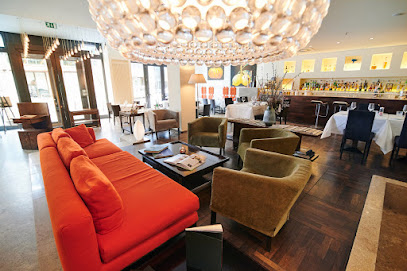
Nante-Eck
0.7 km
Experience authentic German cuisine at Nante-Eck in Berlin’s Mitte district—where tradition meets taste in a cozy atmosphere.

Restaurant Maximilians Berlin
0.8 km
Experience authentic Bavarian cuisine at Restaurant Maximilians in Berlin's Mitte district—where every meal is a celebration of flavor.
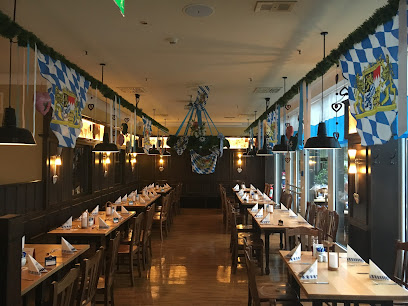
Charlotte & Fritz
0.8 km
Experience the pinnacle of fine dining at Charlotte & Fritz, where exquisite flavors meet elegant ambiance in Berlin's Mitte district.

Berliner Republik
0.9 km
Discover Berliner Republik: A Culinary Haven in Berlin's Mitte District Offering Authentic German Cuisine and Lively Atmosphere.
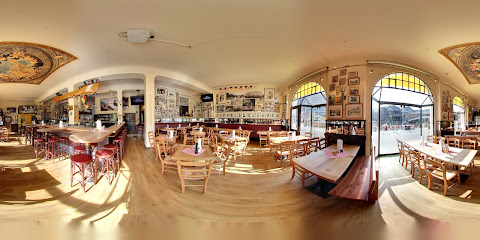
Johnny's Bar - Karibisches Restaurant
0.9 km
Experience authentic Caribbean flavors at Johnny's Bar in Berlin - where every dish tells a story and every sip transports you to paradise.
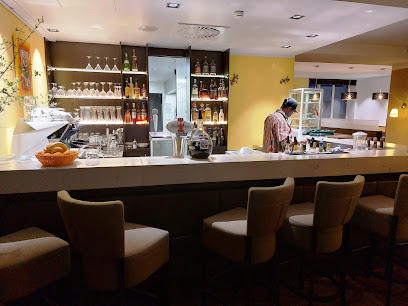
Restaurant Tim Raue
1.2 km
Experience culinary mastery at Restaurant Tim Raue - where Asian flavors meet innovative fine dining in Berlin's vibrant heart.

Grill Royal
1.2 km
Experience exceptional steaks and vibrant ambiance at Grill Royal in Berlin’s Mitte district.

GOLVET
1.2 km
Experience unparalleled fine dining at GOLVET, where modern European cuisine meets breathtaking views in the heart of Berlin.
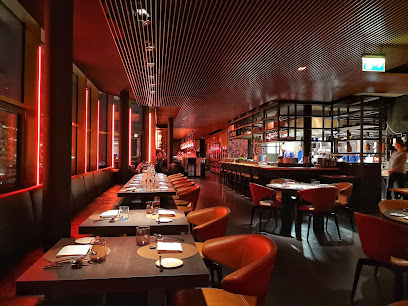
Boulevard Friedrichstrasse
1.2 km
Experience authentic German cuisine at Boulevard Friedrichstrasse, where tradition meets taste in the heart of Berlin.
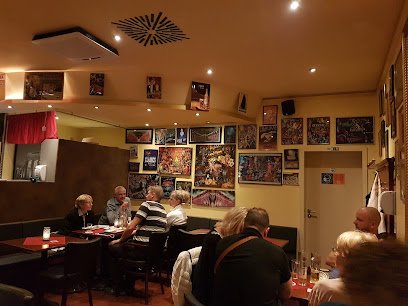
BLESS Restaurant
1.2 km
Experience the vibrant fusion of Vietnamese and Asian cuisine at BLESS Restaurant in Berlin's Mitte district.
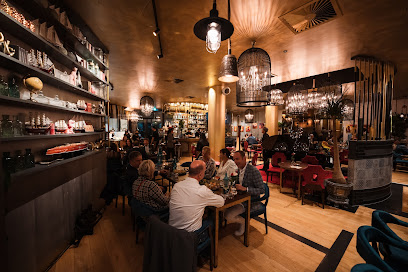
Nobelhart & Schmutzig
1.2 km
Experience exquisite fine dining at Nobelhart & Schmutzig in Berlin - where traditional German cuisine meets innovative culinary artistry.

Restaurant FOREIGN AFFAIRS
1.3 km
Discover authentic Austrian cuisine in Berlin's Mitte district at Restaurant FOREIGN AFFAIRS – where tradition meets taste.
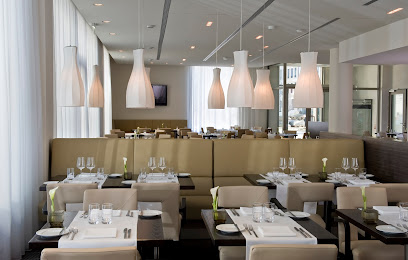
Markets, malls and hidden boutiques
Mall of Berlin
0.4 km
Explore the Mall of Berlin: A shopping haven in the heart of the city with endless retail, dining, and entertainment options.
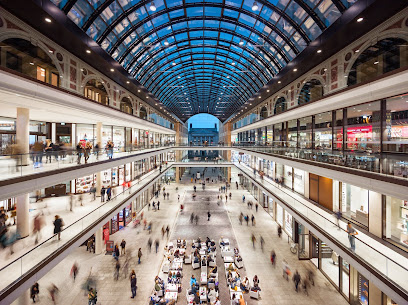
I love Berlin
0.4 km
Explore 'I Love Berlin' for unique souvenirs and gifts that embody the vibrant culture and spirit of Berlin, located in the heart of the city.
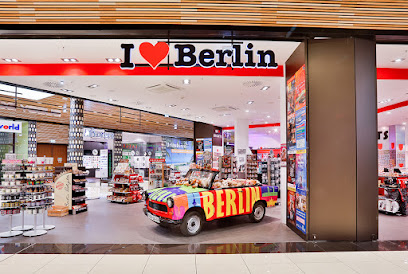
BERLIN STORE
0.6 km
Discover unique souvenirs and local crafts at the Berlin Store, the perfect stop for tourists seeking a piece of the city's vibrant culture.
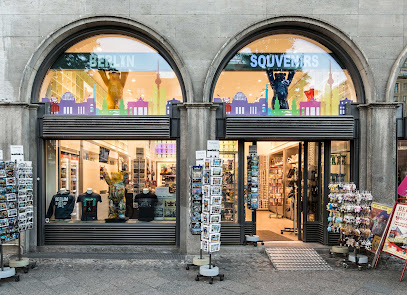
Wolford Boutique Berlin
0.7 km
Experience luxury and elegance at Wolford Boutique Berlin, your go-to destination for exquisite women's fashion and lingerie.
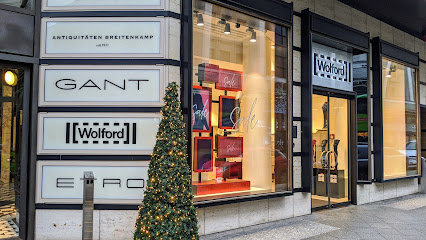
Galeries Lafayette
0.8 km
Discover the allure of luxury shopping and gourmet dining at Galeries Lafayette in the heart of Berlin, a must-visit for every traveler.
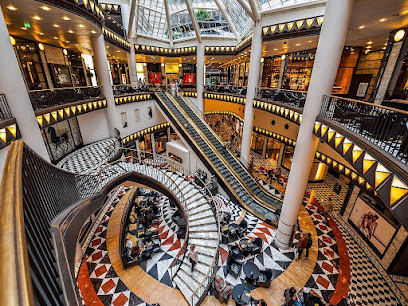
The Playce
0.8 km
Experience shopping bliss at The Playce in Berlin, where high-quality stores meet delightful dining and vibrant entertainment.
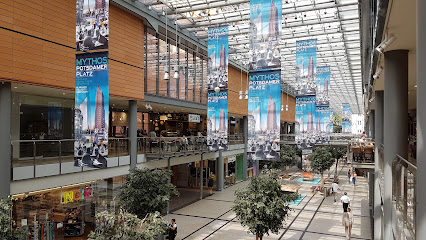
Berlin Loves You
0.9 km
Explore unique souvenirs and local treasures at 'Berlin Loves You', the quintessential store for capturing the spirit of Berlin.
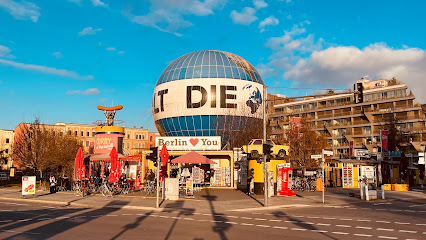
Vielfach Berlin -Das Kreativkaufhaus-
1.0 km
Explore Vielfach Berlin, a unique gift shop and art gallery offering handcrafted souvenirs and local art that capture Berlin's vibrant creative spirit.
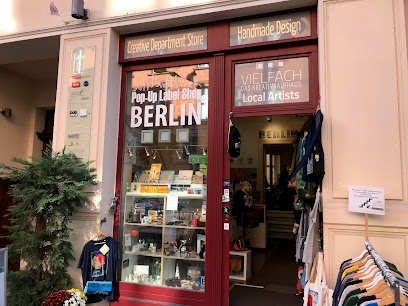
The Square Berlin East
1.0 km
Explore a unique blend of fashion, literature, and home decor at The Square Berlin East, a boutique gem in the heart of Berlin's Mitte district.
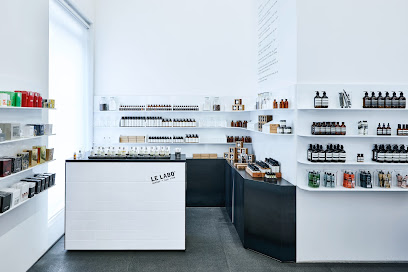
Shop Passage im Humboldt Forum
1.6 km
Explore a captivating selection of gifts and unique souvenirs at Shop Passage im Humboldt Forum, a must-visit destination in Berlin.
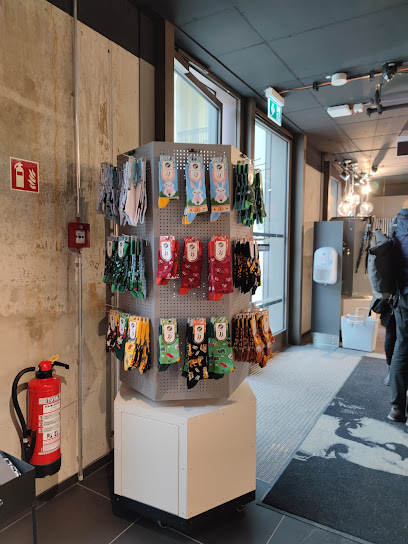
Andreas Murkudis
1.6 km
Explore avant-garde fashion at Andreas Murkudis, a unique clothing store in Berlin's Mitte district showcasing curated collections.

Redbear Berlin
1.8 km
Explore Redbear Berlin, a stylish boutique offering unique fashion pieces in the vibrant Mitte district, perfect for discerning shoppers.
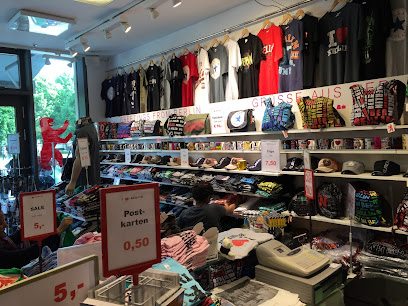
AMPELMANN shop in the Hackescher Markt
1.9 km
Explore the charming AMPELMANN shop in Hackescher Markt for unique Berlin souvenirs that capture the city's spirit and culture.
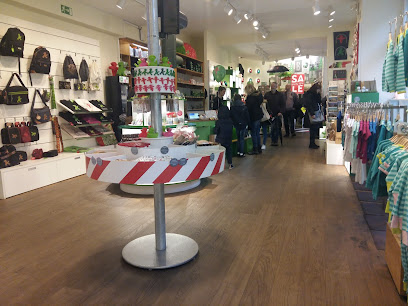
Hackesche Höfe
2.0 km
Explore Hackesche Höfe, a vibrant shopping and cultural hub in Berlin, featuring unique shops, diverse dining options, and artistic experiences.
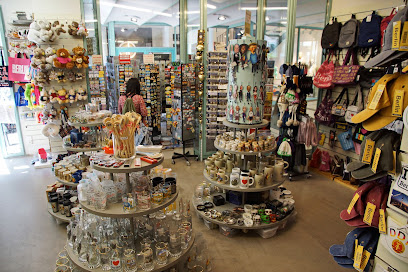
ausberlin
2.1 km
Discover local fashion and unique gifts at ausberlin, a vibrant department store in the heart of Berlin's Mitte district.
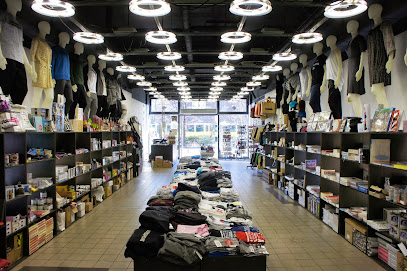
Essential bars & hidden hideouts
The Curtain Club
0.5 km
Experience elegance at The Curtain Club, Berlin's premier bar with exquisite cocktails and a chic atmosphere in the heart of Potsdamer Platz.

Posh Bar
0.7 km
Discover the elegance of Posh Bar in Berlin, where expertly crafted cocktails meet a chic atmosphere in the heart of the city's nightlife.
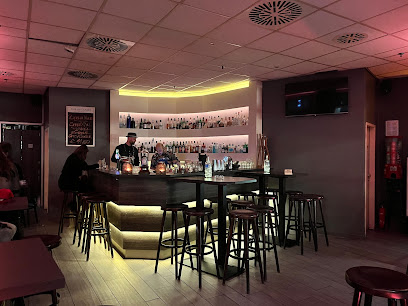
Windhorst
0.7 km
Experience Berlin's vibrant nightlife at Windhorst, an upscale cocktail bar serving exquisite drinks in a stylish atmosphere in the heart of Mitte.
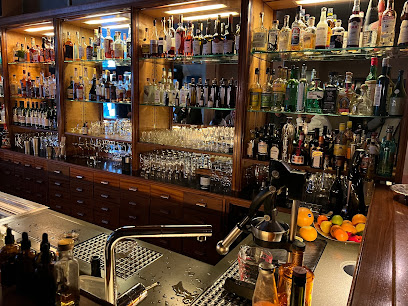
Newton Bar
0.9 km
Experience the vibrant nightlife of Berlin at Newton Bar, where stylish cocktails and a chic atmosphere await in Mitte.
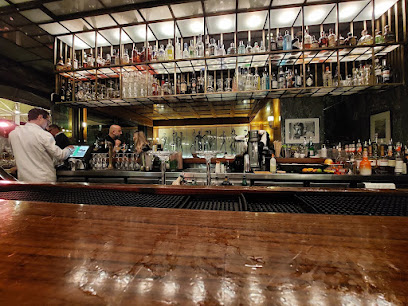
Charlie's Beach
1.0 km
Discover the perfect blend of relaxation and excitement at Charlie's Beach, a vibrant bar in Berlin's Mitte district with delightful drinks and a lively atmosphere.
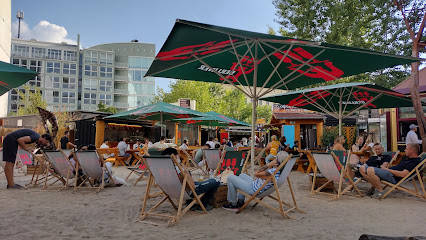
meisterschueler
1.2 km
Discover Meisterschueler in Berlin – a captivating cocktail bar that intertwines art and mixology for an unforgettable experience.
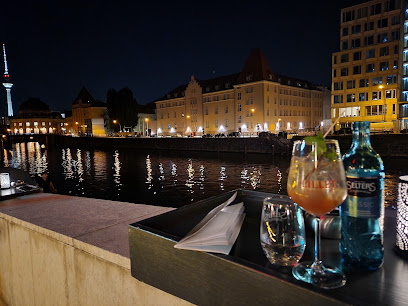
Melody Nelson bar
1.5 km
Discover the vibrant atmosphere of Melody Nelson, Berlin's chic bistro and cocktail bar, perfect for unwinding and socializing.
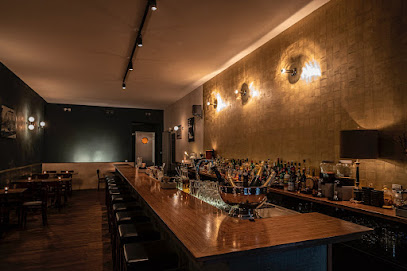
X-Terrain
1.5 km
Discover the eclectic vibe of X-Terrain, a unique bar in Berlin's Mitte with creative cocktails and a lively atmosphere perfect for nightlife enthusiasts.

Bar Amélie
1.6 km
Discover Berlin's vibrant cocktail scene at Bar Amélie, where expertly crafted drinks meet a cozy atmosphere in the heart of the city.
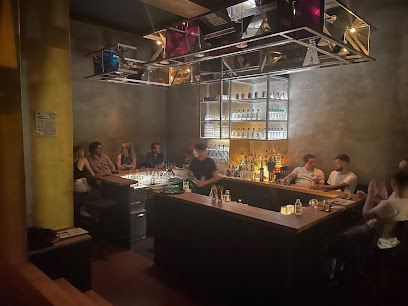
Victoria Bar
1.7 km
Experience the vibrant nightlife of Berlin at Victoria Bar, known for its exquisite cocktails and stylish atmosphere.
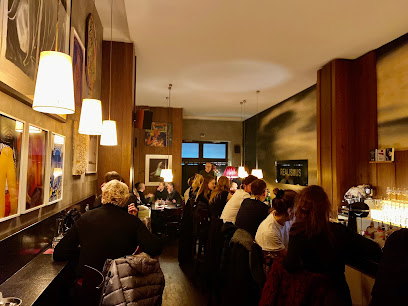
Reingold
1.8 km
Experience the vibrant nightlife of Berlin at Reingold, a cocktail bar in Mitte known for its expertly crafted drinks and lively atmosphere.
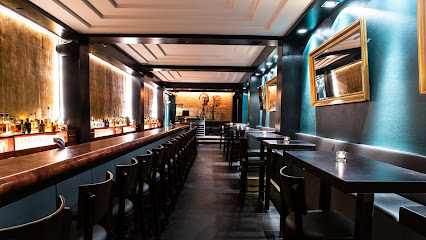
TheCoven Bar
1.8 km
Discover the allure of TheCoven Bar, a cocktail haven in the heart of Berlin's Mitte district, where innovative drinks meet enchanting ambiance.
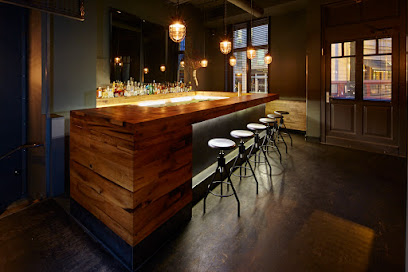
The Unique Bar Berlin
1.9 km
Discover the vibrant nightlife at The Unique Bar Berlin, where exquisite cocktails and a stylish atmosphere await you in the heart of the city.
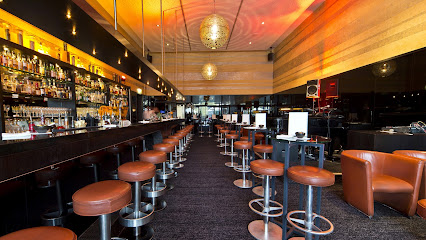
Berlin Icebar
1.9 km
Discover the magic of Berlin Icebar, where cocktails meet ice sculptures for a unique nightlife experience in the heart of the city.
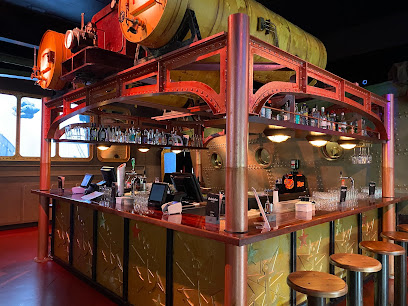
My Bar ICI
1.9 km
Discover the vibrant atmosphere and exquisite drink selection at My Bar ICI, a must-visit bar in the heart of Berlin's Mitte district.
